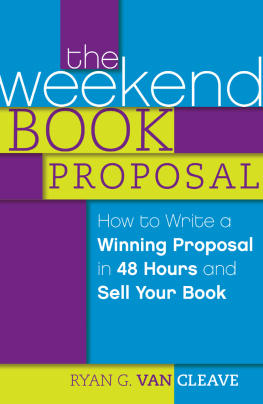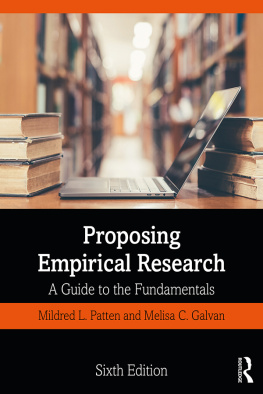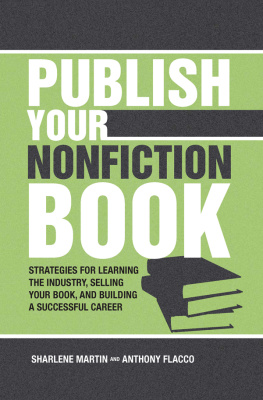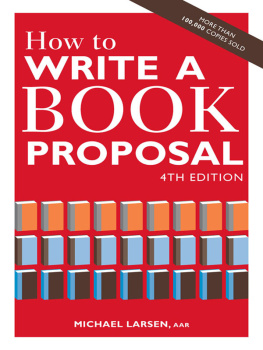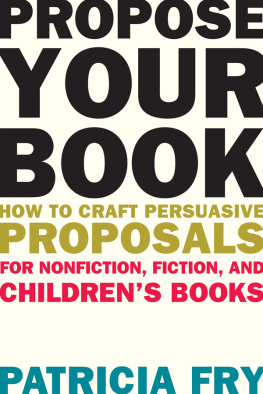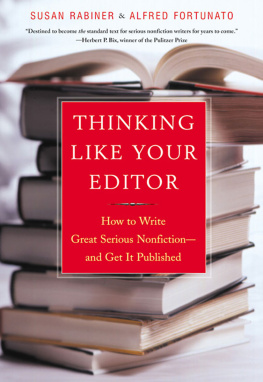Praise for
The Fast-Track Course on
How to Write a Nonfiction Book Proposal
___________________________________
...essential, succinct guideline. This is a must-have reference book for writers...sets the industry standard.
Bob Spear, Heartland Reviews
Every writer needs a book like this. Mettees sound, practical advice is just the ticket to make an editor welcome a writers work! Keep the book close by, because youll use itguaranteed!
William Noble, author of Writing Dramatic Nonfiction
If you follow Steve Mettees advice in this book, youre soon going to need a copy of my book.
John Kremer, author of 1001 Ways to Market Your Book
...invaluable to nonfiction writers.
Marcia Preston, publisher, Byline Magazine
Mettee cuts straight to the chase and provides a no-nonsense guide which will become a reference classic.
Magdalena Ball, editor, The Compulsive Reader
...everything you need to know to wow publishers with professionally presented proposals.
Marc McCutcheon, author of Damn! Why Didnt I Write That?
If youve got a book idea that you want to turn into a book proposal, dont waste time tunneling through a pile of writing books to find out how to do it right the first time. Instead, get Mettees bookhes done the tunneling for you and turned the results into solid gold advice...
Betty Winslow, Absolute Write
...I will now recommend [Mettees] book to prospective authors .... As you would want in any book on writing, it is highly readable, well-organized and to the point.
Marcia Yudkin, author of Freelance Writing
___________________________________
The Fast-Track Course on How to Write a Nonfiction Book Proposal
Second Edition
Copyright 2012 by Stephen Blake Mettee. All rights reserved.
Published by Quill Driver Books
An imprint of Linden Publishing
2006 S. Mary, Fresno, California 93721
559-233-6633 / 800-345-4447
QuillDriverBooks.com
Quill Driver Books and colophon are trademarks of
Linden Publishing, Inc.
For permission to use any portion of this book for academic purposes, please contact the Copyright Clearance Center at www.copyright.com.
ISBN 978-1-61035-163-8
First printing.
Printed in the United States of America on acid-free paper
For Josh, golf partner, business advisor, best friend, son.
Library of Congress Cataloging-in-Publication Data
Mettee, Stephen Blake, 1947
The fast-track course on how to write a nonfiction book proposal / Stephen Blake Mettee. -- Second edition.
pages cm. -- (Great books for writers)
Includes bibliographical references and index.
ISBN 978-1-61035-050-1 (pbk.)
1. Authorship--Marketing. 2. Book proposals. I. Title. II. Title: How to write a nonfiction book proposal.
PN161.M485 2012
808.02--dc23
2012001619
Contents
Chapter one
Chapter two
Chapter three
___________________________________
Preface
I love going to writers conferences. For some reason, at writers conferences, I am far more popular than I am in real life. Writers stop me in the hall just to talk, they laugh long and hard at my jokes, and even seem to find my witty repartee, well, wittier. (I choose to ignore the possibility this is because I am a publisher to whom they may some day want to sell a book.)
I find this attention to be wonderful, because my heroes are writersId rather meet the uncelebrated author of the book from which a movie is made than I would the famous actor or actress starring in the movie (with the possible exception of J Lo).
Stop and think for a minute what our modern world would be like without writers: no books, no magazines, no movies, very little news reportingno blogs! We owe writers. So, with this debt in mindand disregarding the fact that I enjoyed writing it and was driven by visions of great monetary rewardthis book is an attempt to give something back to the writing community.
Why, you ask, write another book on writing nonfiction book proposals since, prior to the publication of this work, there were at least two excellent guides to writing book proposals on the market? Because I found each of these left out small, yet important, bits of information and included extraneous information, interesting and perhaps useful, yet only peripherally applicable to the task of writing and submitting a book proposal. And they were long. When I held one of these books up at writers workshops, I could see eyes glaze over. You mean I have to read a 230-page book to learn how to write a 20-page book proposal? the participants seemed to be saying.
In fact, I found many would decide to forego reading one of these books and, thus, would submit proposals to meand I was certain, agents and other editorsthat lacked necessary information and were generally unprofessional.
Having recognized this problem, I followed the advice I so often give unpublished authors: Find a need and fill it.
In The Fast-Track Course on How to Write a Nonfiction Book Proposal, I have attempted to give abundant information in a sufficiently succinct, entertaining, and accessible manner that people will actually read and use. The publishing world has been in a state of flux for a few years now. In this second edition, Ive attempted to address this moving target. For up-to-date information on where the digital age is taking book publishing, please visit my blog at TheWriteThought.com/blog.
There are too many people who helped with this book to thank each individually, but I especially want to acknowledge Dave Marion, a good friend, old-style gentleman, bon vivant, and one of the best editors Ive known. I also would like to thank attorney/author Jonathan Kirsch for allowing me to include his model agency agreement and his model publishing agreement as appendixes to this book.
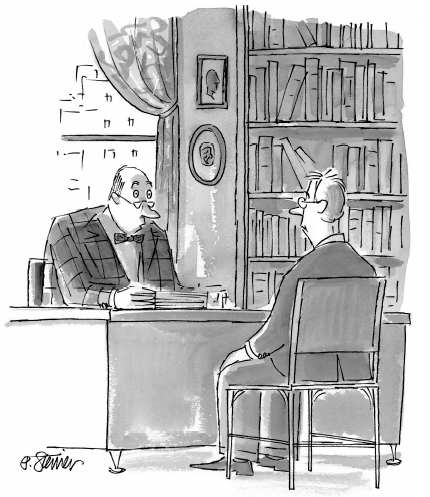
This is a very important book. In fact, its too important to publish.
___________________________________
The New Yorker Collection 1998 Peter Steiner from cartoonbank.com. All Rights Reserved
_____ First Things _____
T ENS OF THOUSANDS OF ORDINARY PEOPLE, PEOPLE JUST LIKE YOU and me, will have their nonfiction books published this year. For many of them, this will be their first time to be published.
Hundreds of these men and women will write their books with lofty dreams of fame and fortune, expecting, or at least hoping, their books will become international best sellersdont laugh, it does happen. Yet most of us write with more modest goals in mind:
Many write to further their careerspublished authors stand out as leaders in their respective fields.
Some write to tell their life storieswell-written memoirs have been a hot genre since Mary Karrs best-selling The Liars Club was published in 1995.
Some write to further a causeregistered nurse Sally Pacholok wrote the internationally acclaimed Could It Be B12? because she knew from experience that many doctors misdiagnose a B12 deficiency.
Others want to record local history before it is forgottenCatherine Morison Rehart has attracted national attention due to the success of her series of regional (Central California) history books, The Valleys Legends & Legacies.
Others write because they have a bit of esoteric knowledge they want to shareBeen There, Shouldve Done That: 995 Tips for Making the Most of College, by Suzette Tyler, has been in print since 1997.
Some write to entertainSimon Bonds




